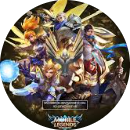Em tham khảo nhé !
One of the most important festivals in my country as well as other Asian countries is Tet, the Lunar New Year Festival. This festival celebrates the beginning of a new year according to lunar calendar, which is around late January or early February. There are three main stages in this festival. Before the New Year's Eve, family members clean and decorate their house with kumquat and peach trees. They also shop for new clothes to wear on the occasion as well as a lot of food for family gatherings. On New Year's Eve, a big meal is prepared to welcome the very first moments of another year with family and friends. People eat, drink and sing cheerfully until the morning. It is our tradition that on the first three days, people visit their relatives and teachers. This is my favorite festival because it is the only occasion when all of my family members gather after a busy year. Besides, during Tet, I can completely relax and forget all about the troubles of the previous year. Lunar New Year has such significance in my country because we believe that, whatever happens during the first days will be repeated throughout the year. So, in order to have a new year full of good lucks, we have to prepare carefully for the most enjoyable festival.Today I’m going to tell you about one of the biggest, oldest traditional festival and has the widest popular range in Vietnam, which is Tet Holiday.Tet marks (=celebrates) the arrival of spring and is the most important celebration in Vietnamese culture and it has the date falling in (which falls in) = takes place around late January or early February according to the Lunar Calendar.Tết is also an occasion for family reunions. When Tet comes around the corner, most Vietnamese people return to their families to visit their family members, to worship at the family altar or visit the graves of their ancestors in their homeland as a sign of respect.Many Vietnamese people prepare for Tet by cooking special holiday food which includes giò, xôi, canh măng anh banh chung - an indispensable (= absolutely necessary) dish that is tightly packed sticky with meat and mung beans filling, wrapped in banana leavesTraditionally, every household is decorated by yellow apricot blossoms (hoa mai) in the central and the southern parts of Vietnam; or peach blossoms (hoa đào) in the northern part.Many customs are practiced around Tet. Children often receive a red envelope containing money from their elders after giving them traditional Tet greetings. During Tet days people also visit relatives and friends to wish them all a happy new year. Local pagodas are popular spots as well, as people go there to wish for a better year to come for their families.Tet holiday is the only occasion that people that people start forgetting about the troubles of the past year and hope for a better upcoming year.













